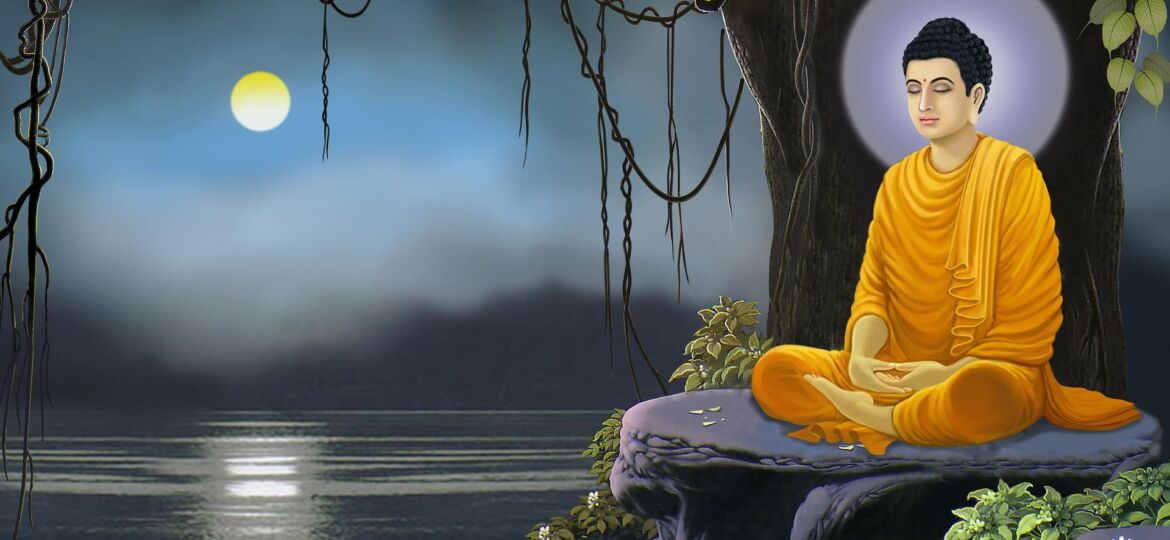
In the annals of human history, few individuals have left as profound an impact on the spiritual and philosophical landscape as Siddhartha Gautama, famously known as Gautama Buddha. His journey toward enlightenment remains a timeless tale of self-discovery, meditation, and profound wisdom that continues to inspire seekers across the globe. This blog delves into the transformative meditative journey that led Gautama Buddha to his ultimate awakening under the Bodhi tree.
- The Early Years and the Quest for Truth
Born into the lap of luxury in the 6th century BCE, Prince Siddhartha Gautama was shielded from the harsh realities of life. However, an encounter with the ephemeral nature of existence – witnessing old age, sickness, and death – prompted him to question the purpose of life. Driven by an insatiable curiosity, he embarked on a quest to understand the fundamental nature of human suffering and find a way to transcend it.
- The Path of Asceticism and Austerities
Siddhartha’s journey led him to renounce his princely status and adopt an ascetic lifestyle, engaging in severe austerities alongside renowned spiritual teachers. Despite enduring extreme physical privations, he found that such extreme practices did not yield the enlightenment he sought. Recognizing the limitations of asceticism, he resolved to explore a middle path that would avoid both indulgence and self-mortification.
- The Turning Point: Meditation and the Bodhi Tree
Gautama Buddha’s pivotal moment occurred when he abandoned extreme practices and turned to meditation as the vehicle for his self-discovery. He sought solitude beneath the Bodhi tree in Bodh Gaya, India, vowing not to rise until he had found the answers he sought. For forty-nine days, he delved into deep states of meditation, confronting his inner demons and gaining profound insights into the nature of reality.
- The Four Noble Truths: Foundation of Wisdom
During his meditation, Gautama Buddha unraveled the Four Noble Truths, a fundamental framework that elucidates the nature of suffering (dukkha) and its cessation. These truths outline the existence of suffering, its origin in attachment and desire, the possibility of its cessation, and the Eightfold Path that leads to the cessation of suffering. This philosophy laid the foundation for Buddhism and remains a cornerstone of Buddhist teachings.
- The Middle Way: Eightfold Path to Liberation
At the core of Buddha’s teachings is the Eightfold Path – a comprehensive guide to ethical and mental development that paves the way to liberation. This path emphasizes the cultivation of wisdom, ethical conduct, and mental discipline. Each of the eight factors – Right Understanding, Right Intention, Right Speech, Right Action, Right Livelihood, Right Effort, Right Mindfulness, and Right Concentration – plays a crucial role in achieving a balanced and awakened life.
- The Universal Message
One of the most remarkable aspects of Gautama Buddha’s journey is the universal appeal of his teachings. While rooted in the ancient Indian context, his insights into human nature, suffering, and the path to liberation transcend cultural and temporal boundaries. The emphasis on mindfulness, compassion, and self-awareness resonates with people from all walks of life, making Buddhism a global philosophy.
- Legacy and Contemporary Relevance
Gautama Buddha’s enlightenment marked the beginning of a legacy that has endured for over two millennia. His teachings continue to be a source of solace and guidance for millions of people around the world. In an age marked by technological advancement and materialism, the quest for inner peace and understanding remains as relevant as ever. The practice of meditation, mindfulness, and the pursuit of wisdom are antidotes to the stresses of modern life.
Conclusion
The journey of Siddhartha Gautama from a sheltered prince to an enlightened sage under the Bodhi tree encapsulates the essence of human existence – the search for meaning, truth, and liberation from suffering. His transformative experience and teachings have reverberated through time, providing a roadmap for seekers to navigate the complexities of life. As I reflect on Gautama Buddha’s journey toward awakening, I find a timeless inspiration to embark on my own path of self-discovery, mindfulness, and enlightenment.